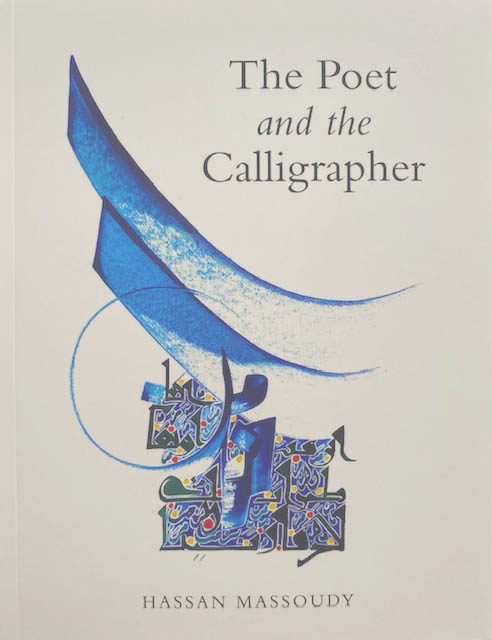A bond is created between the calligrapher and
the poet. The calligrapher transforms the words
of the poet, leading them down another path,
giving them new life. The calligrapher uses poetry
to build their composition, making letters fly,
mixing, curving and bending words to their will.
A calligrapher is the choreographer of letters. They
make words dance. They strive to create osmosis
between form and meaning. But sometimes a
letter, word or phrase resists and refuses to obey
the calligrapher’s quill. The calligrapher tries over
again to capture the essence of a word. At times,
the calligrapher may betray the poet, but the poet
is indispensable to the calligrapher.
The foundations of Arabic poetry can be traced
back to the pre-Islamic poets of Arabia. These
poets lived in the desert and their poems evoked
the immensity and the infinite time and space of
their home, alongside tales of the departure of
the tribe to other camps and lost love. Each tribe
had its own poet, who was the guarantor of the
tribe’s memory and told its story like an epic. As
pre-Islamic poetry was oral, the poets chiselled
their poems like jewels, using simple words and
a sober style. This suits the calligrapher well, who
prefers short verses that have the ability to instantly
conjure an image that the calligrapher can translate
into a gesture or line on paper or canvas.
...
|

